A poem inspired by Billy Collins
Category: Philosophy
Reflections on Bruce Lee’s Water: Does Skill Actually Matter?
Don’t get set into one form, adapt it and build your own, and let it grow, be like water. Empty your mind, be formless, shapeless — like water. Now you put water in a cup, it becomes the cup; You put water into a bottle it becomes the bottle; You put it in a teapot it becomes the teapot. Water can flow or it can crash. Be water, my friend.
Bruce Lee said it*—but did he actually do it? Did he flow like water? Judging by his performances in Enter the Dragon, Chinese Connection and Fists of Fury, I’d say: no, not at all.
Bruce Lee in The Chinese Connection
Maybe Bruce didn’t show his real kung fu skills on the silver screen.
An Alternative to Traditional Bullshido Theory and Application

With his proclamation Cogito ergo sum, Descartes set the stage upon which most Western philosophers have played for the last four hundred years. Under his model, the human being is composed of two distinct entities: mind and body. Some thinkers agree, and others disagree, but few challenge the validity of the model itself, and its silent implication that nothing lies between.
Following George Orwell’s advice, I will begin by stating the obvious: East Asian martial arts training was never meant to be performed within this framework.
Although Descartes’ model allowed for each aspect to influence the other, he did not recognize the full breadth and depth of the mind-body relationship. So, like the atomic model of physics failed to explain observable and repeatable quantum phenomena, Descartes’ atomic metaphysics obscures the potential of high-level martial arts. When authentic traditional training is reformatted to fit into the duelistic model, the result is typically and predictably Bull-shido.
Theory and Application, and Nothing More
Two tragic outcomes result from the application of duelistic mind-body theory to martial training. First, the Complete Martial Art is defined as one containing both Theory and Application—and where Theory is given undue precedence.
Ordosclan, The Grumpy Savant of rec.martial-arts
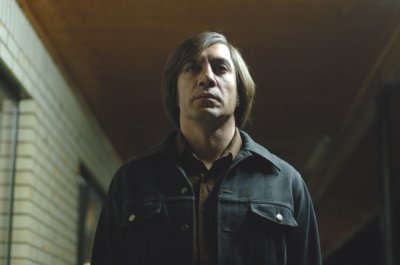
Long before the invention of the blog, and even before the creation of the World Wide Web, there was Usenet. The world’s first electronic social network was established in 1980, and martial artists have been arguing there ever since.
Back in the late 1990s, I started reading the rec.martial-arts newsgroup as most people do, with posts sorted by discussion topic. I soon discovered that, since 90% of the replies on any given topic were rubbish, it made more sense to sort by author instead. Although I abandoned rec-martial arts years ago, due to its low-signal-to-noise ratio, I can still remember the names of some of my favorite writers. At the top of that list, I place the mysterious Ordosclan, also known as Turiyan Gold.
I don’t know Ordosclan’s real name, or his training history. I don’t know how many of his posts were written under the influence of anti-psychotic medication, as his critics claimed. Perhaps not enough of them.
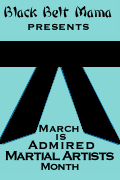
Ordosclan’s martial arts commentaries were sagacious and entertaining, sometimes cryptic and unfortunately brusque. In honor of Black Belt Mama’s Admired Martial Artists Month, I’d like to highlight a few:
In boxing, the boxer keeps his hands up on either side of his face for protection. Punches are thrown from this position. One hand goes out, the other stays by the face for protection.
Why does karate require that you throw a punch from the hip? What is gained by this?
The point of pulling the fists back is to open the chest. Doing so during stance changes makes it harder to use the arms for balance. It’s not for punching. Punches done from the hip are just a training exercise. The Japanese simply copied basic Shaolin from the Chinese. Some teachers try and read ridiculous theories into why something is the way it is: “It’s for qi,” “it’s for jing,” “It trains you to monkey elbow a guy that puts you in a bear hug from behind”, etc.If you start taking things out of MA that are not combat-relevant, you’re left with punches and kicks, knees and headbutts. The simple answer is: it’s not martially oriented. Its just a myth that Shaolin monks are/were “fighting” monks. That’s nonsense. And everyone knows it.
The Twenty Best Martial Arts Quotes of All Time
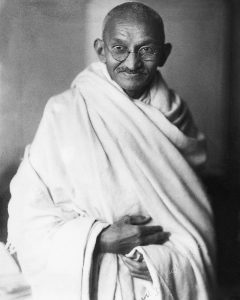
Mohandas Gandhi
Where there is only a choice between cowardice and violence, I would advise violence.
~ Mohandas Gandhi
The nation that will insist upon drawing a broad line of demarcation between the fighting man and the thinking man is liable to find its fighting done by fools and its thinking by cowards.
~ William Francis Butler
He who is taught only by himself has a fool for a master.
~ Ben Jonson
The weakest of all weak things is a virtue that has not been tested in the fire.
~ Mark Twain
Courage first; power second; technique third.
~ Author unknown
Warren Buffett on MMA Training and Self-Defense
A Fake Interview with Real* Quotes
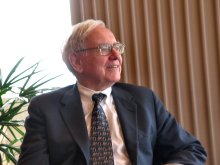
Credit: Mark Hirschey
Martial Development: First of all, congratulations: a recent surge in Berkshire Hathaway’s stock price has made you the richest man in the world. $62 billion dollars, I hear. According to my estimates, you could literally buy up all the tea in China.
Warren Buffett: I drink Coca-Cola.
Martial Development: Fair enough. You know, kung fu is all about profitably investing time and effort. As one of the world’s greatest investors, I thought you might have some unique insights to share with us.
Warren Buffett: I’ve never even made a hostile acquisition! What do I know about kung fu?
Martial Development: More than you realize.
Blogging From a Birmingham Jail
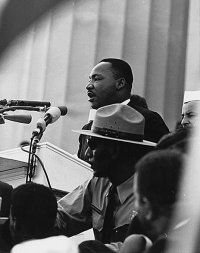
You speak of our activity in Birmingham as extreme. At first I was rather disappointed that fellow clergymen would see my nonviolent efforts as those of an extremist. I began thinking about the fact that I stand in the middle of two opposing forces in the Negro community. One is a force of complacency, made up in part of Negroes who, as a result of long years of oppression, are so drained of self-respect and a sense of “somebodiness” that they have adjusted to segregation; and in part of a few middle class Negroes who, because of a degree of academic and economic security and because in some ways they profit by segregation, have become insensitive to the problems of the masses. The other force is one of bitterness and hatred, and it comes perilously close to advocating violence.
I have tried to stand between these two forces, saying that we need emulate neither the “do-nothingism” of the complacent nor the hatred and despair of the black nationalist. For there is the more excellent way of love and nonviolent protest. I am grateful to God that, through the influence of the Negro church, the way of nonviolence became an integral part of our struggle. If this philosophy had not emerged, by now many streets of the South would, I am convinced, be flowing with blood.
Oppressed people cannot remain oppressed forever. The yearning for freedom eventually manifests itself, and that is what has happened to the American Negro. Something within has reminded him of his birthright of freedom, and something without has reminded him that it can be gained.
If his repressed emotions are not released in nonviolent ways, they will seek expression through violence; this is not a threat but a fact of history. So I have not said to my people: “Get rid of your discontent.” Rather, I have tried to say that this normal and healthy discontent can be channeled into the creative outlet of nonviolent direct action. And now this approach is being termed extremist.
But though I was initially disappointed at being categorized as an extremist, as I continued to think about the matter I gradually gained a measure of satisfaction from the label. Was not Jesus an extremist for love: “Love your enemies, bless them that curse you, do good to them that hate you, and pray for them which despitefully use you, and persecute you.” Was not Amos an extremist for justice: “Let justice roll down like waters and righteousness like an ever-flowing stream.” Was not Paul an extremist for the Christian gospel: “I bear in my body the marks of the Lord Jesus.” Was not Martin Luther an extremist: “Here I stand; I cannot do otherwise, so help me God.” And John Bunyan: “I will stay in jail to the end of my days before I make a butchery of my conscience.” And Abraham Lincoln: “This nation cannot survive half slave and half free.” And Thomas Jefferson: “We hold these truths to be self-evident, that all men are created equal …”
So the question is not whether we will be extremists, but what kind of extremists we will be.
In his Letter From a Birmingham Jail, Martin Luther King Jr. posed a question to bloggers great and small.
Your blog confers a measure of authority, influence, and social capital. How do you choose to spend it?
Kung Fu: Basic Instinct, or Advanced Intelligence?
What is the best way to approach kung fu training? Should we seek to train our instincts, or cultivate our intelligence?
The answer seems obvious. In a fast-paced and dangerous combat scenario, there is simply no time for intellectual deliberation. We must let our animal instincts take control, to react instantly with the self-defense techniques we have drilled to perfection…right?
Ancient Chinese Feats of Strength
Written by the apocryphal Taoist philosopher Liezi, between 400 B.C. and 300 A.D.
The Earl of Kung-yi was famous among the rulers of the states for his strength. The Duke of T’ang-hsi mentioned him to King Hsuan of Chou, who invited him to court with the highest honors. When the Earl of Kung-yi arrived, the King examined his physique and found him a puny fellow. He was puzzled and asked doubtfully:
“How strong are you?”
The Nondual Perspective on Subjective Reality
The principle of Subjective Reality—that the universe is consciousness and nothing more—has been employed by authentic spiritual traditions for millennia. Its intended function is not to reveal Universal Truth, but to prepare a seeker for the next stage in their development by dispelling their material illusions.
In other words, Subjective Reality is a spiritual colonic, which for best results must be followed by healthy wisdom food. New-age teachers who skip this critical lesson are like surgeons who excise a tumor, but neglect to close the incision afterwards.